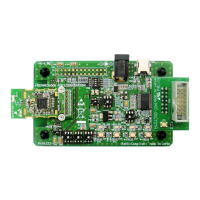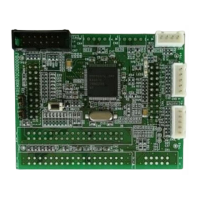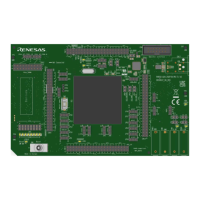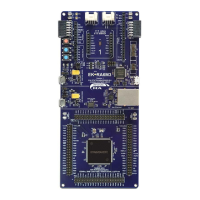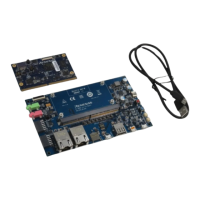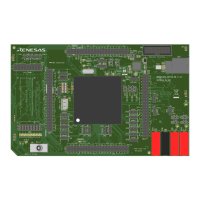RL78/G13 Safety Function (Frequency Detection)
R01AN0956EJ0100 Rev. 1.00 Page 9 of 70
Feb. 27, 2012
(4) Check an interrupt source.
The processing differs depending on the interrupt source upon return from the HALT mode. Check the interrupt
source after return from the HALT mode.
<When returning from the HALT mode upon completion of pulse interval measurement>
Get a pulse interval measurement value.
If the measurement value is within the tolerable range, LED1 turns off. Then, return to step (3).
If it does not, LED1 blinks. Then, return to step (3).
<When returning from the HALT mode upon a switching external interrupt>
To prevent chattering, take actions (A) through (F) below.
A) Using the interrupt handler for external interrupts to set the RINTE bit in the interval timer control register
(ITMC) to 1. Then, start counting.
B) Wait until the value written to the RINTE bit is reflected.
C) Wait until an interval timer interrupt occurs.
D) Check the switch status with the interval timer interrupt handler. That is, check the P137 status.
E) If this status is 1, determine that the switch has not been depressed. Then, return to step (3).
F) If it is 0, determine that the switch has been depressed. Perform the operations below.
Stop the timer of the TAU0.
Change the HOCO clock which is the count clock for TAU0.
If the current count clock for TAU0 is set by TAU0_COUNT_CLOCK_1 in Table 5.3, change to the count clock
set by
TAU0_COUNT_CLOCK_2 and turn on LED2. Then, return to step (2).
If the current count clock for TAU0 is set by TAU0_COUNT_CLOCK_2 in Table 5.3, change to the count clock
set by
TAU0_COUNT_CLOCK_1 and turn off LED2. Then, return to step (2).

